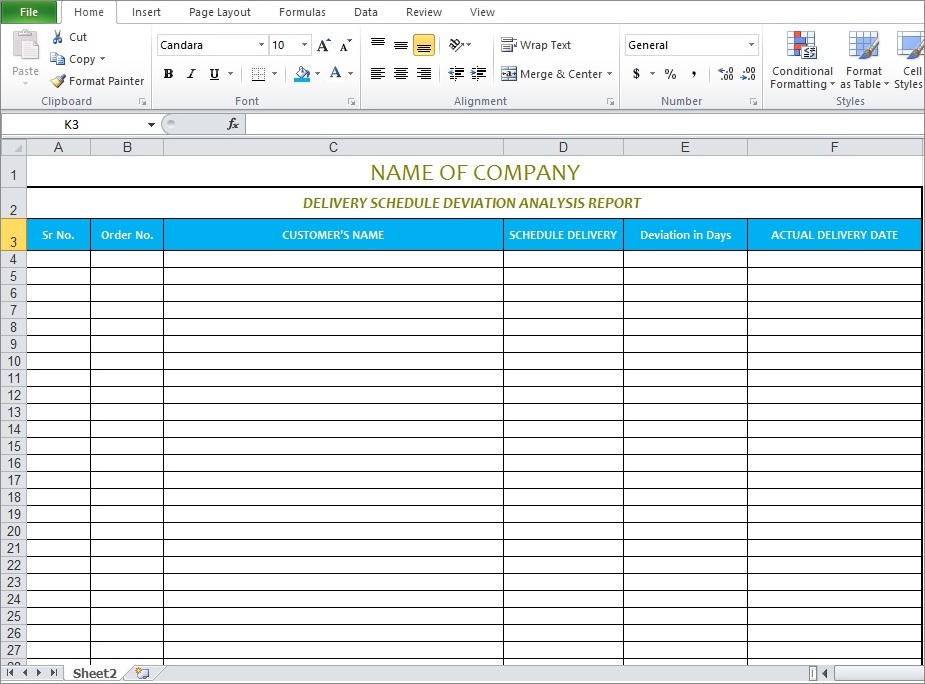When it comes to managing the logistics of a business, one of the key factors to consider is the delivery schedule. A well-structured and efficient delivery schedule ensures that products and services reach customers promptly, leading to customer satisfaction and repeat business.
In this article, we will delve into the intricacies of delivery schedules, exploring what they are, why they are important, and how to create an effective one. Whether you are a small business owner or a logistics manager, this guide will provide you with the knowledge and tools needed to optimize your delivery schedule and streamline your operations.
What is a Delivery Schedule?
A delivery schedule refers to a predetermined plan that outlines when and how products or services will be delivered to customers. It includes information such as delivery dates, time frames, routes, and modes of transportation. The delivery schedule is crucial for businesses as it helps ensure that products reach customers on time, reduces inefficiencies, and improves overall customer satisfaction.
Delivery schedules can vary depending on the nature of the business and the industry. For example, a courier service may have a daily delivery schedule, while a manufacturing company may have a weekly or monthly schedule. Regardless of the frequency, a well-structured delivery schedule should take into account various factors such as order volume, available resources, customer preferences, and geographical locations.
Why is a Delivery Schedule Important?
A well-planned and executed delivery schedule offers several benefits to businesses:
- Customer Satisfaction: A reliable delivery schedule ensures that products or services are delivered to customers on time, leading to increased customer satisfaction and loyalty.
- Efficiency and Cost Savings: By optimizing routes and consolidating deliveries, businesses can minimize transportation costs and improve overall operational efficiency.
- Inventory Management: A delivery schedule enables businesses to manage their inventory effectively by ensuring that products are delivered when they are needed, avoiding stockouts or excess inventory.
- Competitive Advantage: A well-managed delivery schedule can give businesses a competitive edge by providing faster and more reliable service compared to their competitors.




How to Create an Effective Delivery Schedule
Creating an effective delivery schedule involves careful planning and consideration of various factors. Here are some key steps to help you create a delivery schedule that meets your business needs:
1. Analyze Your Order Volume and Frequency
Before creating a delivery schedule, it’s important to understand your order volume and frequency. Analyze your historical data to identify patterns and trends in customer orders. This will help you determine the optimal frequency and capacity needed to fulfill your orders efficiently.
2. Consider Geographical Locations
If your business operates in multiple locations, it’s essential to consider geographical factors when creating a delivery schedule. Identify your customers’ locations and group them based on proximity. This will allow you to optimize routes and reduce transportation costs.
3. Evaluate Available Resources
Assess your available resources, including vehicles, drivers, and warehouse capacity. Consider their capabilities and limitations when creating your delivery schedule. Ensure that you have enough resources to fulfill your orders without overburdening your team or compromising on service quality.
4. Utilize Technology and Software
Invest in delivery management software or transportation management systems (TMS) to streamline your delivery operations. These tools can help automate route planning, track deliveries in real time, and provide valuable data for analysis and optimization.
5. Communicate with Customers
Keep your customers informed about their delivery status by providing regular updates and tracking information. Effective communication helps manage customer expectations and reduces inquiries or complaints.
6. Continuously Monitor and Improve
A delivery schedule is not a one-time task. Continuously monitor your delivery performance, gather feedback from customers, and identify areas for improvement. Regularly review and adjust your schedule to optimize efficiency and meet changing customer demands.
Conclusion
A well-designed delivery schedule is critical for businesses to ensure timely and efficient product or service delivery. By understanding the importance of delivery schedules and following the steps outlined in this guide, you can create an effective schedule that meets your business needs and satisfies your customers. Remember to continuously monitor and improve your delivery schedule to adapt to changing demands and maintain a competitive edge in the market.
Delivery Schedule Template – Download
